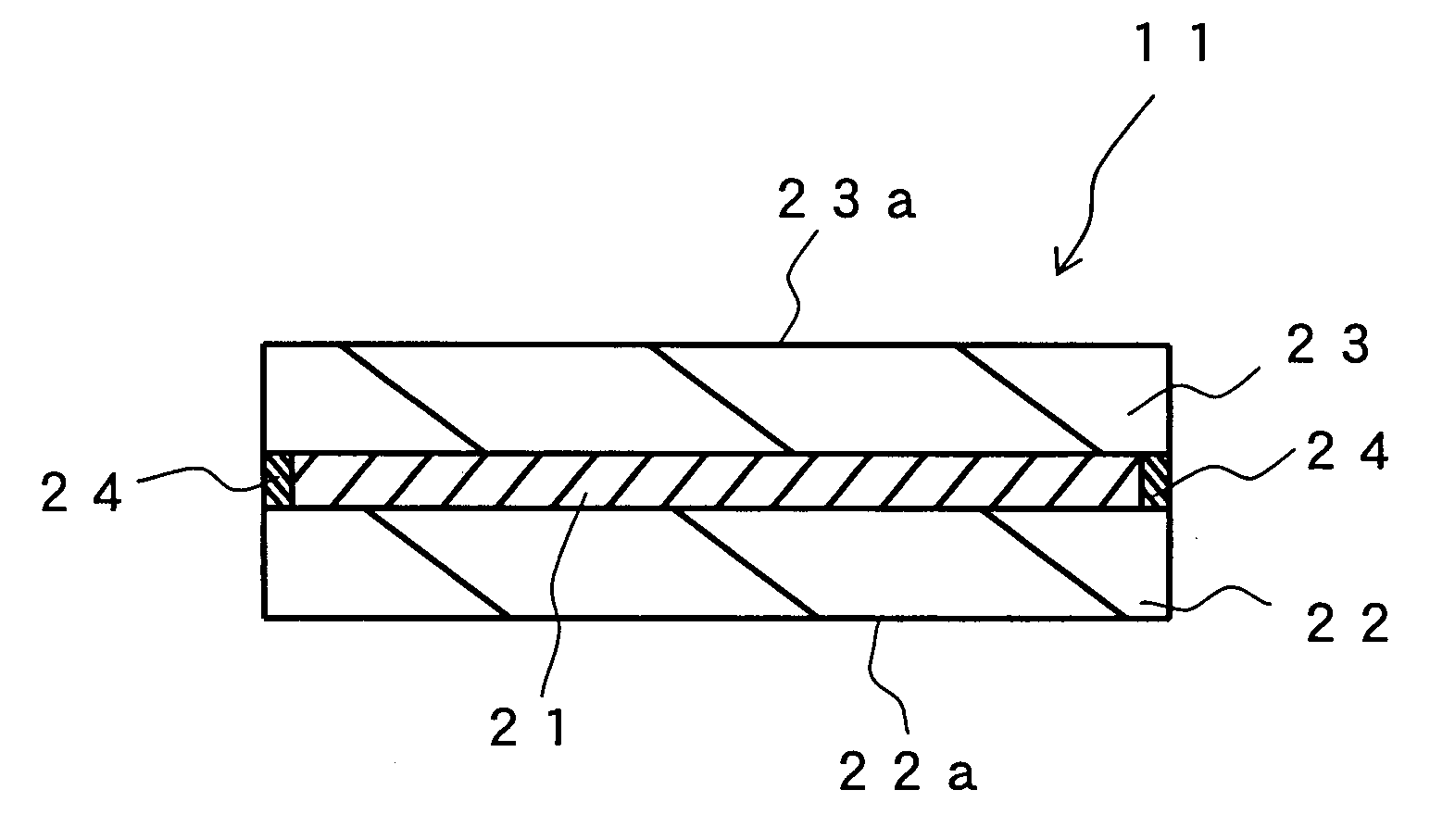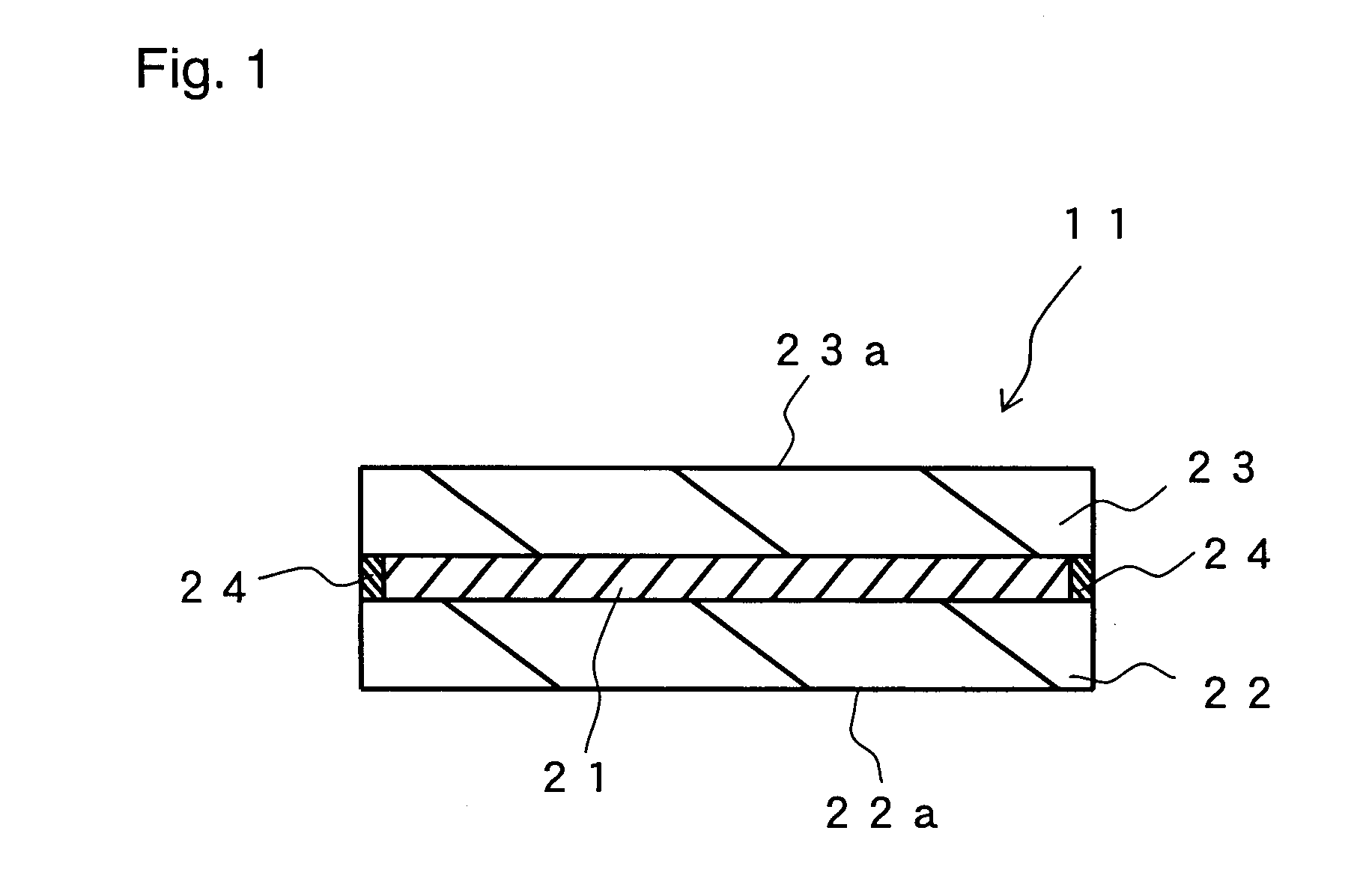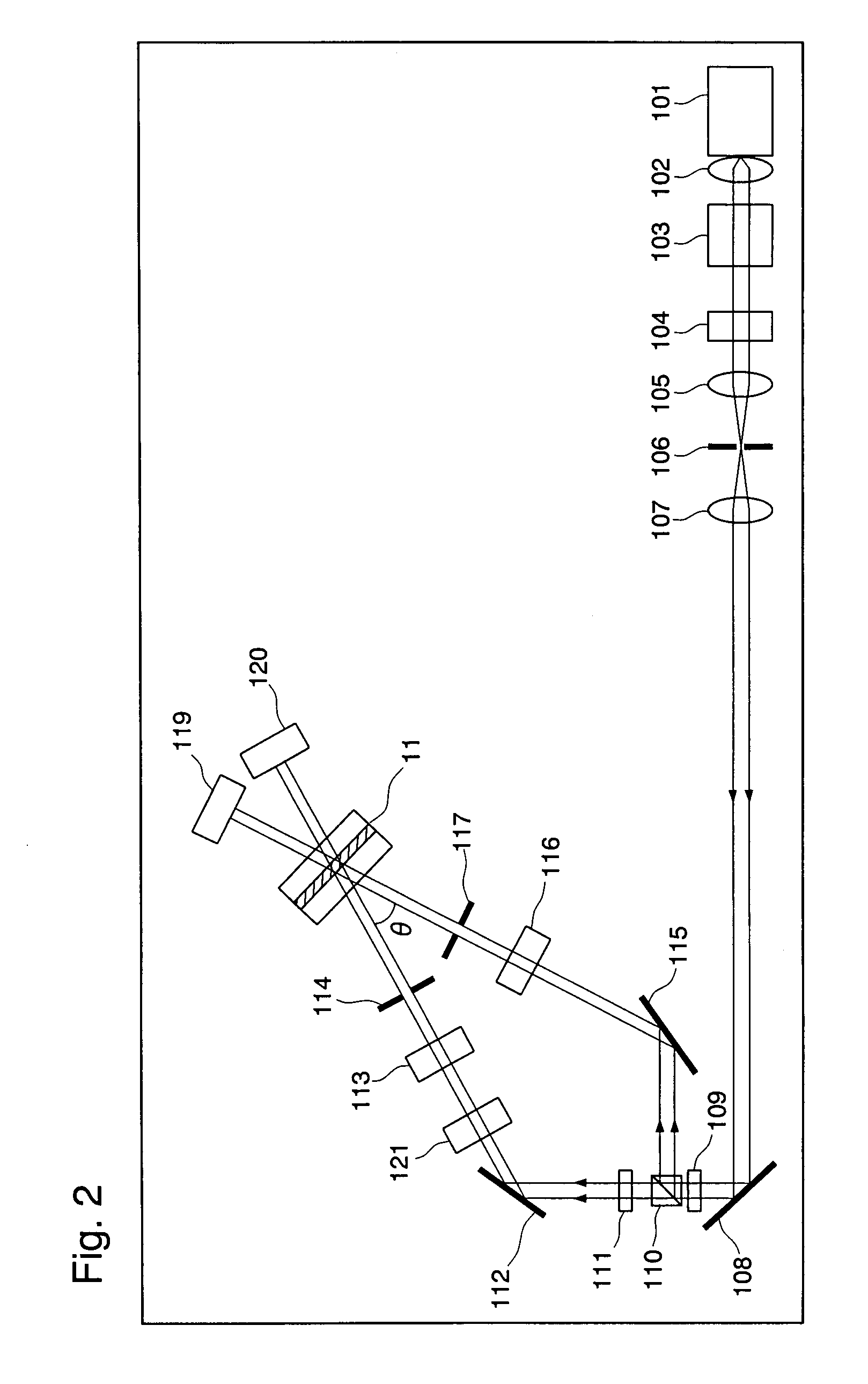Hologram recording material, process for producing the same and hologram recording medium
a technology of hologram recording and recording medium, which is applied in the field of hologram recording material, process for producing the same and hologram recording medium, and can solve the problems of deteriorating separability between adjacent diffraction peaks
- Summary
- Abstract
- Description
- Claims
- Application Information
AI Technical Summary
Benefits of technology
Problems solved by technology
Method used
Image
Examples
example 1
(Synthesis of a Matrix Material)
[0112]10.85 g of pentaethoxytantalum (Ta(OEt)5, manufactured by Kojundo Chemical Lab. Co., Ltd.) and 5.21 g of ethyl acetoacetate (EtAcAc) were mixed with each other in 2.5 mL of an ethanol solvent at a room temperature, and then the mixture was stirred for 10 minutes. The ratio by mole of Ta(OEt)5 / EtAcAc was 1 / 1.5. To this reaction mixture was added 6.5 g of diphenyldimethoxysilane to prepare a metal alkoxide solution. The ratio by mole of Ta / Si was 1 / 1.
[0113]A solution composed of 0.75 mL of water, 0.3 mL of a 2 N aqueous solution of hydrochloric acid, and 2.5 mL of tetrahydrofuran (THF) was dropwise added to the metal alkoxide solution at a room temperature with stirring. The stirring was continued for 1 hour to conduct a hydrolysis reaction. In this manner, a sol solution containing Ta, Si and phenyl groups at a ratio by mole of Ta / Si / the phenyl groups of 1 / 1 / 2 was obtained.
(Photopolymerizable Compound)
[0114]To 100 parts by weight of polyethylene ...
example 2
[0131]A hologram recording material solution was yielded in the same manner as in Example 1 except that thioxanthen-9-one was used as a photosensitizer. The resultant hologram recording material solution was applied in the same manner as in Example 1 to yield a hologram recording material layer (21) having a dry thickness of 320 μm. A hologram recording medium (11) was obtained in this manner.
[0132]Characteristics thereof were evaluated in the same manner as in Example 1. As a result, a dynamic range M / # was a high value of 7.9, which was a converted value corresponding to the case that the thickness of the hologram recording material layer was converted to 1 mm.
[0133]A light transmittance of the medium (recording layer thickness: 320 μm) before the recording exposure to light (i.e., at the initial stage) was 60% at 405 nm. A fall in the light transmittance of the medium at 405 nm (i.e., the recording wavelength) after the recording was not observed.
[0134]Furthermore, a layer (dry t...
example 3
(Synthesis of a Matrix Material)
[0135]8.2 g of tetra-t-butoxyzirconium (Zr(O-tBu)4, manufactured by Kojundo Chemical Lab. Co., Ltd.) and 5.56 g of ethyl acetoacetate (EtAcAc) were mixed with each other in 2 mL of a n-butanol solvent at a room temperature, and then the mixture was stirred for 10 minutes. The ratio by mole of Zr (O-tBu)4 / EtAcAc was 1 / 2. To this reaction mixture was added 5.2 g of diphenyldimethoxysilane to prepare a metal alkoxide solution. The ratio by mole of Zr / Si was 1 / 1.
[0136]A solution composed of 0.6 mL of water, 0.24 mL of a 2 N aqueous solution of hydrochloric acid, and 2 mL of tetrahydrofuran was dropwise added to the metal alkoxide solution at a room temperature with stirring. The stirring was continued for 1 hour to conduct a hydrolysis reaction. In this manner, a sol solution containing Zr, Si and phenyl groups at a ratio by mole of Zr / Si / the phenyl groups of 1 / 1 / 2 was obtained.
(Photopolymerizable Compound)
[0137]To 100 parts by weight of polyethylene glyc...
PUM
| Property | Measurement | Unit |
|---|---|---|
| wavelength | aaaaa | aaaaa |
| thickness | aaaaa | aaaaa |
| wavelength | aaaaa | aaaaa |
Abstract
Description
Claims
Application Information
 Login to View More
Login to View More - R&D
- Intellectual Property
- Life Sciences
- Materials
- Tech Scout
- Unparalleled Data Quality
- Higher Quality Content
- 60% Fewer Hallucinations
Browse by: Latest US Patents, China's latest patents, Technical Efficacy Thesaurus, Application Domain, Technology Topic, Popular Technical Reports.
© 2025 PatSnap. All rights reserved.Legal|Privacy policy|Modern Slavery Act Transparency Statement|Sitemap|About US| Contact US: help@patsnap.com



